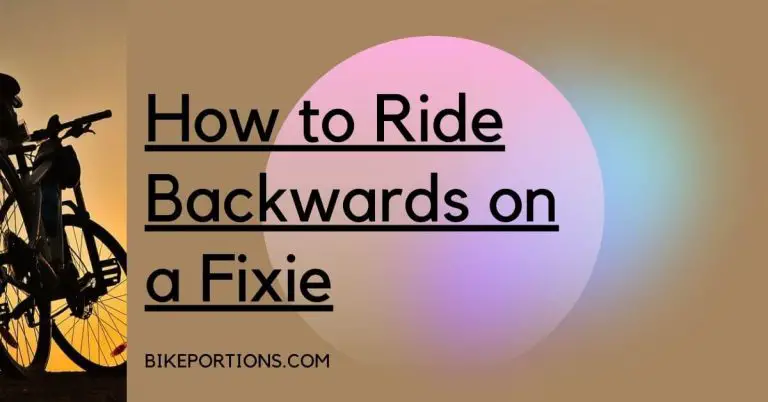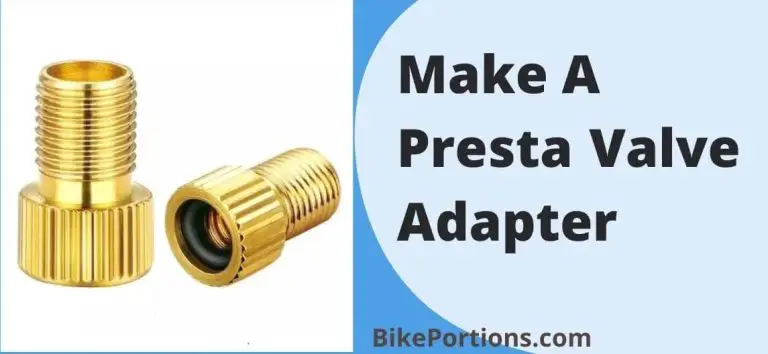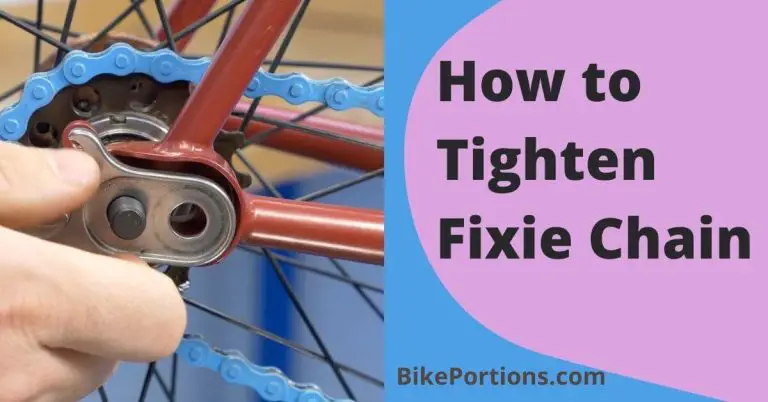Best Fixie Bike Color Ideas (2023) – Custom/Unique Paint
There are so many things to think about when choosing a fixie bike color. It is important to be able to visualize the final result. But also the decisions you will make while painting your fixie. Take some time to study the best way to create your own custom fixie bike color ideas.
Everyone is in love with fixie bikes, from professional athletes to casual cyclists. So, if you’re also a fan of these bikes, this article will help you find the best colors for your fixie bike.
Contents
Fixie Bike Color Ideas
If you’re wondering what the best color combinations for fixie bikes are, there are a number of options. Here are some ideas to get you started:
1. Blue and white – This classic color combo is perfect for a laid-back feel.
2. Cream and green – A soft, feminine mix that is perfect for summer days.
3. Red and black – A flashy and exciting option that will stand out.
4. Red or black – For a bold fixie style, choose this combination for an edgy look.
5. Navy and white – A great choice for showing off your skills on the bike. What color is your bike? Share the colors with us below.
What color should my Fixie Bike be?
Your Fixie Bike should be of a light color, such as white or light blue. If you don’t want to look like a ghost, use something that contrasts with the natural environment.
Fitting your Fixie Bike Color Choices on an existing bike design theme or color scheme. So if you already have a vector flow in mind for your overall bicycle colorway of riding choices. Maybe consider staying away from any specific shade of one particular color family until after those big decisions are made. Selecting numerous shades will not only create a mess to keep track of and maybe even harder if you want frequent changes in color, but it will also cost more!
How do you paint your Fixie Bike?
Painting a Fixie Bike is not difficult, but there are a few things you’ll need to do to make the process as smooth and easy as possible.
The first step is to clean and prepare your bike. Remove all the dust and dirt from the frame, fork, and gears.
Next, use a primer or paint of your choice to fill in any scratches or dents on the bike.
Finally, use a finish of your choice and apply two coats for maximum results.
Fixie Paint Measurements & Materials
You will need 2 or 3 paint containers, that are normally used for plastic toy figurines. You can probably get away with a 4-quart container to mix two colors. A popular and useful product called Filler Plastic from Model Magic is an excellent choice because it comes in different colors easy on the eye “window dressing” style gradient shades.
The first color should be your main goal color to match as closely as possible so you do not have any overlaps or gaps between your paint scheme and the natural bike color of your ride.
TIP: Fill multiple containers with a different color so if you get an unwanted shade, it’s easy to mix it up quickly until you find one that works correctly on YOUR bike. It’s very important not to overfill!
Overextending one container without filling all others will simply create drips and runs as well as uneven application. As with everything, practice makes perfect!
In the beginning, you may have to work several days or even weeks on different colors before finding one that meets your goals. This is fine as long as you make sure not to overfill! Practice and a little patience will make this process much easier in no time at all.
An empty plastic container can be used for mixing paint by simply adding water until it mixes easily into your desired shade result ( you can do this in advance before you get started or while it’s still mixing when it arrives at your door). It is best to prevent possible contamination between containers by only using one per color. I found that periodically shaking the pipe gently will help mix better and less residue (just make sure not to shake it excessively as with all processes, too much agitation could damage the paint!).
TIP: If mixed correctly and applied properly on both sides of your bicycle, no two paint jobs will come out looking the same!
TIP: If a light layer of ceramic-based primer is applied first (primer prevents staining caused by wet layers of Polycrylic on metal) then you can start up top in the front with both colors, paying special attention to avoid missing any spots.
After a thin, even coat has been applied on each side and drying time at least 2 hours complete, apply another heavy layer to each side. This time, pay attention to avoid miss-spots or streaking and adhere only where you intend for the colors to meet.
When it’s finally dry on both sides, begin painting in small zigzag motions with a craft paintbrush. Make sure it’s thick enough so that no drips from any leaks are visible immediately after application. You can always add more layers if this is not sufficient!
Again, applications should be dried for at least two hours before applying the wax coat, achieved with a hairdryer set as hot as it will go.
TIP: After decorating and drying your entire bike, you may find that the paint didn’t penetrate into every nook and cranny of the frame as desired ( especially annoying when the last few areas were quite difficult).
Here’s how to remedy this. Sprinkle a small amount of sand on each area, using a clean brush, then press it with your fingers to get maximum effect. Do this when the bike is warm ( This method will not work as well if applied at cold ambient temperature!)
I know the down look of all those “dirt” and scratches, but hey – at least none is destroying my bicycle frame… The whole process took me around two weeks start to finish while waiting for the paint’s dry! Not much attention was ever paid to this appearance until the painting was actually done. You are however looking at one very carefully thought out, detailed, and well worth the time!
Paint Selection and Buying Tips for Beginners
When it comes to choosing a fixie bike paint, there are a few things to keep in mind. First and foremost, you’ll want to select a paint that is appropriate for your climate and your bike. Second, be sure to choose a color that will look good with your bike’s finish and other accessories. Finally, consider factors like price and available choices when making your purchase.
Protect your investment
When buying a fixie bike, one of the things you’ll be looking to do is protect your investment. It can be expensive, so it’s recommended that you choose high-quality paint for widespread use against the elements.
Dilute solution
Using a dilute solution of some sort (think about water––thousand parts per million—and diluted by more than one part) will ensure that no overspray occurs from using touch-up sticks and shields after painting with spray cans or brushes. It won’t take long for the paint to settle or stiffen in your joints before you attempt rides with it.
Avoid using white and blue spray
You’ll hopefully have used gallons upon gallons of white by now, so let’s move on to choosing specs that are more entertaining than useful at this point: Avoid using white and blue spray on fixie bike paint transparent plastic parts. In addition to looking outrageous in a death-defying fashion, it will not last; this is especially important when painting accessories such as front street lights or rear car fenders!
Avoid metallic
Like the aforementioned: avoid anything that’s green (or metallic) unless you’re intentionally going for a nurse shark effect with your paint color choice. As they say in Reno: ‘Beware of the Green!
This is not only unlikely to look good on fixies; soon you’ll find your paint isn’t staying put and starts peeling off, taking with it any chance hope that your bike will be adequate for riding at all. If you have some left-over spray can paint then try mixing water-based model builder’s “White Metallizer” (with some white parts added) with a runny to fixable paint. You can even use your fingernails (while cutting a notch in the clearcoat if you want it to be more obviously under-painted than just being left uncovered).
Emulate vintage paints
Here’s another example of going way too far, and this time we’ve got glitter mixed in! This is what happens when someone listens to their friends rather than looking at how they actually want to ride their fixie bike. What I personally see as the quintessential nostalgic glory of a vintage paint job is making this sort of over-the-top mess with metallic colors and glitter (and aerosol). It’ll look awful until it’s covered up. Then again when you start riding (assuming it wasn’t damaged by now), here’s my solution:
1) Keep your glitter indoors in a Ziploc bag
2) Spray your body and parts with white acrylic paint before
3) Going outside to play.
Glittery finish
If you want a glittery finish, then use clear nail polish! A nice metallic basecoat should still show through below the glitters to maintain some realism. While being relatively much easier on your hands than direct application (as opposed to spray paints). You can also print out these pretty designs instead of cutting them, or skip this step altogether if your fixie bike is essentially just going to go to one place. Preferably a nice flat wall with few cars zooming by and visibility all around.
Just outright daubing glitter from big globs instead of painting it on or cutting art. The easy way to do this (just in case you’ve lost your lightbulb somewhere) takes about 20 gallons for you and 3 buckets. Cook up some wet globs and pour them into your buckets. Have one of these close by at all times to quickly dip in paintbrushes or sponges, small foam on-tip markers /paintbrushes (check out this amazing article with solid examples), chopsticks, anything you can manage that might catch on the glitter.
It is a preliminary step that will give you an idea of how long/durable it’ll be. How much it’ll weigh, and all besides for the same amount of glitter. Then you can just mix this with paint to get your desired look or go out (at least 3-4 times) in a day if that’s what it takes. Make sure to label both buckets and colors/types before starting though so I won’t repeat myself later on :).
What is the best way to clean my Fixie Bike?
The best way to clean your Fixie Bike is to use a mild soap and water mix. Let the bike dry before storage. Strike the paint from your Fixie Bike just using a soft washcloth. Use dishwashing soap to remove scuffs, dirt, and brake dust without scratching the surface of your bicycle’s frame.
How to remove factory paint from Fixie Bike?
The easiest way is by using acetone (Nail-varnish remover) as advised everywhere and especially on websites of bearing kits. For people who own RX7 or R2-type car kits, there are getting a lot of ideas about how they can clean their bikes. A duet that these two consist mainly in frame, fork, and wheels with matching color all together help following those articles practically.
There is no special preparation that needs to be done before painting a fixie bike. Just make sure the bike is clean and free from any oils or grease.
Fixie bike is unique. Some riders believe that adding decals or stickers before painting makes the paint job look more professional. While other riders think that it can actually add unnecessary weight and complexity to the finished product. Ultimately, you will have to decide for yourself whether or not adding decals or stickers before painting is a good idea.
Final Thoughts
If you’re looking for some inspiration on the best fixie bike color ideas, you’ve come to the right place. Bikes have been used in a variety of ways by various individuals. They can be used for commuting, racing, skidding, riding on hills, and even as street art. If you have any questions or thoughts, just reply to this article. (Latest Updated).







